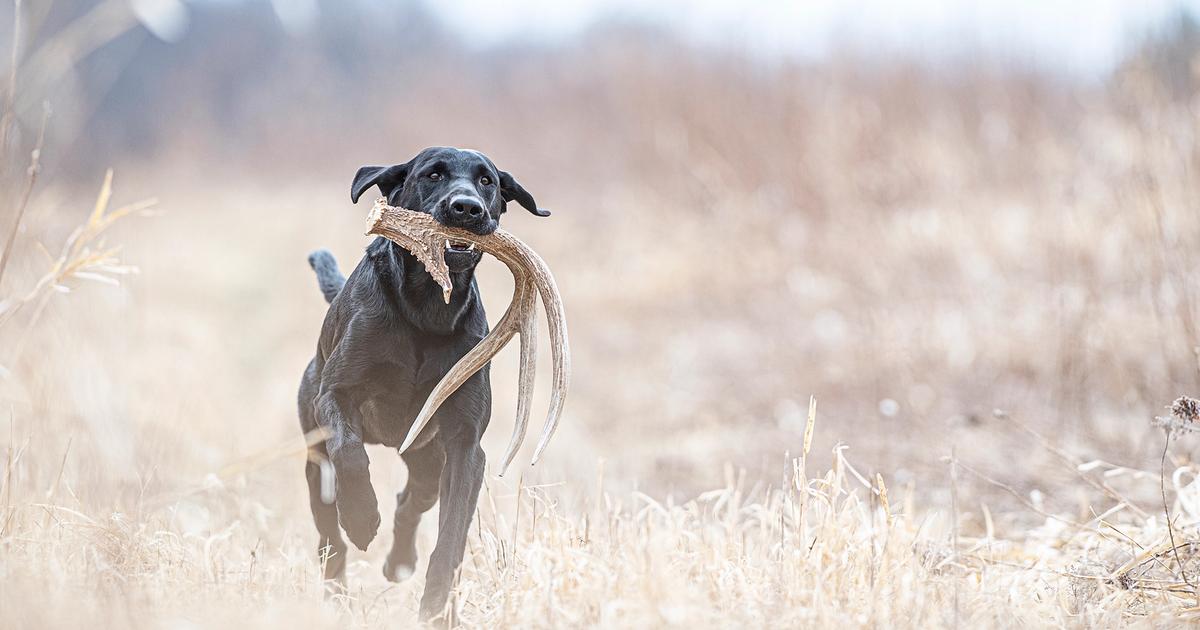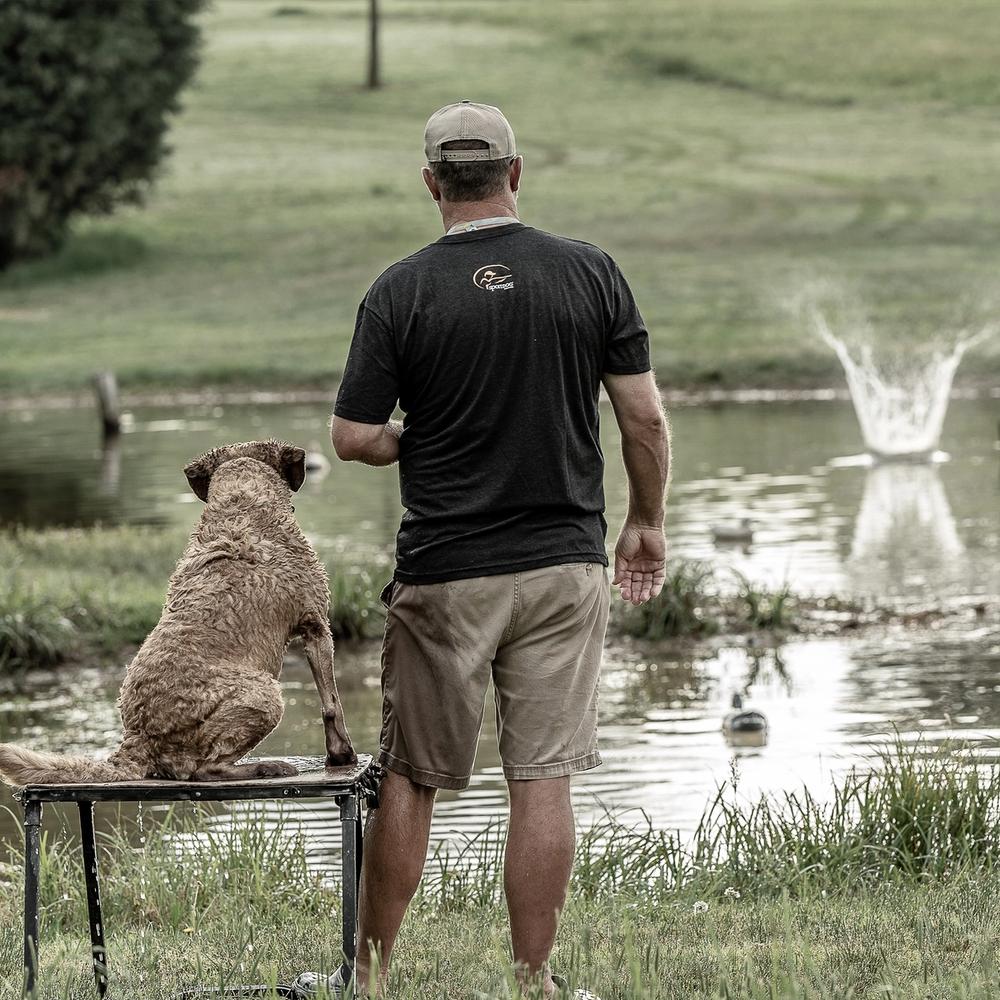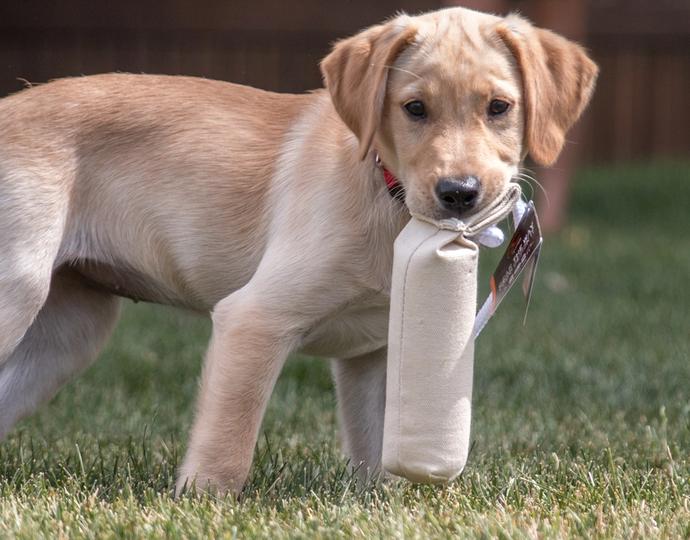
Shed Hunting: Help Your Dog Help You - Part 2
Posted by The SportDOG StaffIn my last article I described the benefits of shed antler hunting in the off-season and how to get your dog started in this fun sport. Now let me go into more detail about how to teach your dog to efficiently hunt for sheds.
A dog has three weapons to use when shed hunting. First and most obvious is his sense of smell. Number two is sight. I think this is something we dog handlers sometimes don’t put enough emphasis on. A dog that’s down closer to ground level than we are and has had lots of experience in finding and retrieving sheds definitely learns to pick out that shape even if he hasn’t had a chance to smell it. And lastly is ground coverage. A dog covers at least three times as much ground as you can in any given amount of time. So, when it comes to shed hunting, the guy with the dog is always going to have the advantage.
Once you’ve gotten past the training stage and it’s time to get into some serious shed hunting, you really want to think about ways to help your dog maximize his three weapons. One basic rule is to work into the wind as much as possible. Unlike a running pheasant or grouse that’s laying down a trail to follow when it moves, an antler is going to stay in one spot, the place where it fell off the buck’s head. Unless an antler is lying in plain sight, it’s really easy for a dog to miss it if he doesn’t have the wind helping him. Therefore, try to plot your search course ahead of time so you’re hunting into the wind and on the downwind side of a crosswind as much as possible.
To improve a dog’s ability to spot antlers, go back to basic training and use oversized cardboard cutouts. Place them around the yard or in very light cover where they’re easy to spot. Then do some more “Find the bone!” drills just like you did when you were first teaching your dog about antlers. Through repetition he’ll develop an eye for that distinctive shape.
The last weapon is a little trickier to develop, especially if you have an upland bird dog that is used to always hunting in gun range. My champion shed hunting dog, Easton, spent his first five years hunting within 20 yards of me. So, how I got him out of that rhythm was to plant the silhouettes at least 40 yards apart in a zigzag pattern and then let him go after them. When a dog knows he has the green light to run out and grab that antler, it doesn’t matter if it’s 100 yards away.
Obviously, this is counter to the training you’ve done for upland birds where you need your dog to hunt close, and the most common question I get is: “How do I keep my dog from thinking it’s ok to hunt so far and wide when it’s time to go back to bird hunting?”
Because shed hunting season doesn’t really begin until most bird seasons have ended, and because you are a good three or four months from the end of shed hunting until the next bird season, this shouldn’t be much of a problem as long as you spend plenty of time training for each separately. You definitely don’t want to confuse or try to trick your dog by, for example, going shed hunting in the morning and then going to a pheasant farm that afternoon. Keep the seasons completely separate is my advice.
Also, as I mentioned in my earlier article, use “Find the bone!” for shed hunting and “Hunt ‘em up!” for birds. Those are the words I use. You can say whatever you want, but the point is to use different commands so your dog isn’t confused.
Regardless of you and your dog’s level of experience or success with shed hunting, the most important thing is to get yourself and your dog out of the house and give it a try. I promise it will make the wait for the next bird hunting season seem a lot shorter!
Please check all of your local and state regulations before training.
Related Articles

Shed Hunting: Starting Your Dog Out the Right Way - Part 1
by The SportDOG Staff
It’s too bad bird seasons only last a few months. It seems like fall arrives and brings the excitement of pheasant and duck hunting, but then before you know it winter has set in and all you can do is dream and wait for the next season. Thankfully there’s another...

Training Your Retriever for Double Duty
by The SportDOG Staff
If you own a waterfowl dog, chances are that sooner or later you’re going to ask it to perform upland duty. It might be a pheasant hunt as a sideline to your Dakota duck hunt, or maybe an afternoon of quail hunting after a morning goose hunt. Most retrievers handle...

Building a Steady Retriever
by Tom Dokken
A retriever that remains calm in a duck blind and concentrates on watching birds fall is a joy to hunt with. In a perfect world, that’s how all retrievers would behave. While a steady retriever is something that most hunters want, the reality is that very few retrievers are truly...

Training Your Retriever to Dummies
by The SportDOG Staff
Training a retriever can be one of the most rewarding experiences any hunter can have. There are no secrets involved: just patience, repetition, perseverance, consistency and the ability to anticipate reaction. In short, the trainer needs to be just a little smarter than his pupil. This is not always as...
